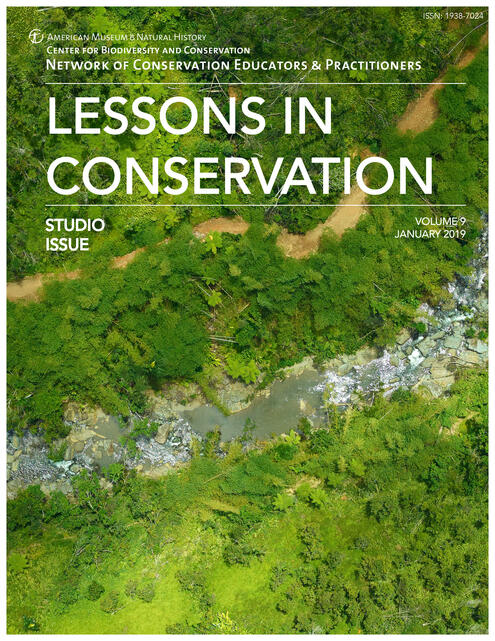Lessons in Conservation: Volume 9
In this "Studio" issue of Lessons in Conservation, Volume IX features a collection of case studies and exercises developed by NCEP Conservation Teaching and Learning Studio participants. These resources are designed to promote active learning and develop critical thinking skills through interactive games, conservation decision-making exercises, real-world case studies, and research projects. Specifically, they encourage students to grapple with the realities of “tradeoffs”—a frequent feature of real-world conservation decision-making.
Lessons in Conservation is the official journal of the Network of Conservation Educators and Practitioners (NCEP), and is currently available in electronic format. All materials in Lessons in Conservation are peer-reviewed, and are reproduced from NCEP teaching modules. If you plan to use these materials in your teaching, you may wish to download easily modifiable versions of the materials found in Lessons in Conservation, along with additional teaching and learning modules, from the NCEP module collection.
Download the entire PDF:
